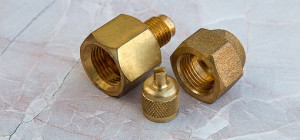
Wood Stove- a thing that keeps your entire home warm and in good health. Plus, you enjoy the evening bon-voyage sometimes with your family and friends roasting marshmallow and turkey and merrymaking the whole evening and night.
Amongst, all the jubilant aspects, some flaws make way towards destruction. Often, the TV channels and newspapers are loaded with the awful incidents of house fire ignited from the inefficient wood stove.
Researches and development are continuously done for the betterment of the wood stoves modifying the design and suiting the technology as per the needs of the modern days.
The present wood stove models highlight improved efficiency and protection. The stoves do not produce intense smoke and leave minimal ash behind. The best part is that today’s woodstove requires less firewood.
The older version of woodstove release almost 15 to 30 grams of smoke/hour. The new EPA certified models come up with approximately 4.5 grams of smoke/hour.
If you want to buy a new woodstove, check EPA certification label on the stove’s back.
You need to look at the safety labelling authorized by the ULC (Underwriters’ Laboratories of Canada).
The emission limit:
Since EPA has issued the performance standards for the new wood stoves in the year 1988. The mandatory smoke emission limit for the wood stove is currently 4.5 grams of smoke each hour (g/h) under the Step 1 of the revised standards for the wood burning room heaters’ performance.
On May 15, 2020, step 2 will take effect. The standard will be then lowered to 2.0 g/h.
The manufacturers of stove have refined their combustion technologies since many years. The certified emissions of the newer stoves are in the range of 1 to 4 g/h.
When you will compare the models, keep your eye on the EPA white label. The lower the g/h rating, the more the efficiency and cleanliness of the stove.
Let’s find out about the types of wood stove:
There are a couple of general approaches for obeying the smoke emission limits rendered by the EPA. These are catalytic and non-catalytic combustion.
Both are effective with the difference in performances.
Most of the commonly available stoves are non- catalytic. The high-end ones are catalytic. The catalytic ones are the result of complex technology. They need high maintenance for productive operation.
Let’s discuss in details:
Catalytic stoves:
Here, the smoky exhaust is passed via a coated ceramic honeycomb inside the wood stove. There, the particles and the gases light up and burn. These stoves are enabled to generate long-term and even heat.
The catalytic wood stoves have a bypass damper that is lever-operated. It can be opened for initiating and reloading purposes.
The cons:
The catalytic honeycomb meets degradation over time. One should replace it at regular intervals. The durability depends on the user. If maintained properly, one catalytic stove can last more than six seasons.
If not used appropriately and over-fired and wrong fuels like treated wood and garbage are burned and regular cleaning and maintenance are not done, the catalyst can deteriorate within two years.
Non-catalytic stoves:
- These stoves do not use a catalyst.
- They have 3 internal features for creating a good environment for full combustion:
- Firebox insulation
- Large baffle for producing hotter and longer gas flow path
- Preheated combustion air instigated through small holes lying above the firebox fuel.
- Timely replacement is required for the internal parts and the baffle.
How to get the right size and the best model?
When you go to a shop for buying a wood stove, take certain aspects into primary consideration:
- Size of the space you are supposed to heat
- Various sizes depending on the need to warm up a single room or the entire house
Follow the YouTube video for understanding the differences between Catalytic and Non-Catalytic Wood Stove: https://www.youtube.com/watch?v=_DajfQQN7qM
The characteristics of wood stoves:
The small stoves are best fitted for heating a room or a mere seasonal cottage.
The small stoves can be used as zone heaters for distinct are of the house. It works best in the larger house accompanied by the older central furnaces.
It helps in decreasing the fuel consumption with conservation of the energy. Hence, you can save a lot of money.
The medium-sized stoves are worthy for heating small homes, winter cottages and the medium-sized houses that are energy efficient.
The large stoves are worthy of open plan houses, leaked and old buildings, large mansions, and homes of cold climate zone.
Discuss with the experienced retailers of the hearth products who have a sound knowledge of the performance characteristics of the stoves. Carry the floor plan of your building. The retailers can help you find the most suitable fireplace insert, hearth products and wood stove that will give you the maximum benefit.
Contributed by:http://www.jamesthesweep.co.uk/







